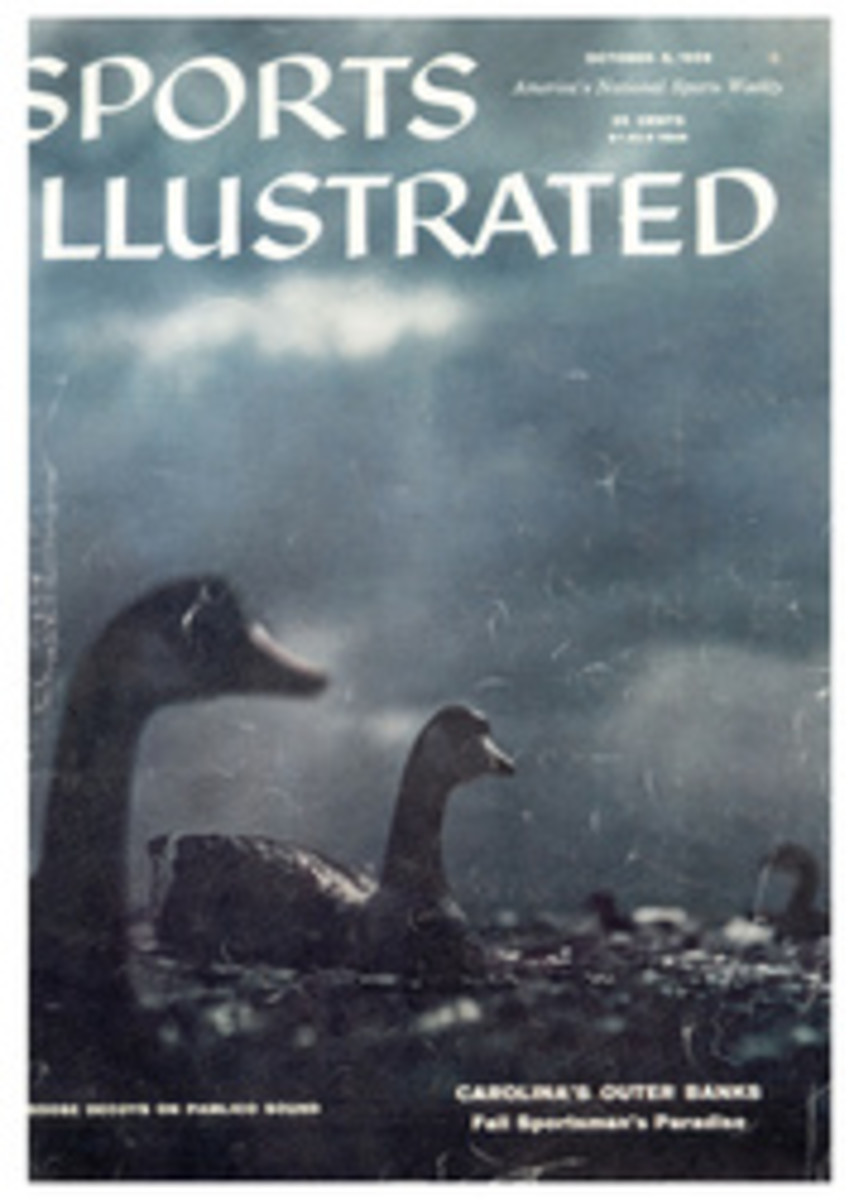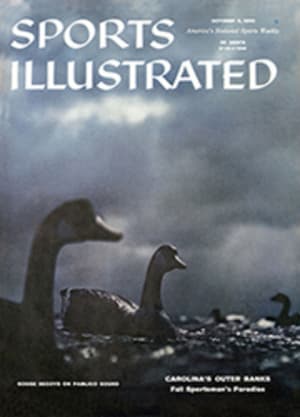
Mr. Widener's Quail
The widener silks, light blue with dark blue hoops and cap, have been well known to American racegoers since 1913. Home pastures for the Widener Thoroughbreds are Erdenheim Farm in Chestnut Hill, Pa. and Old Kenney Farm in Lexington, Ky. George D. Widener, Master of "Erdenheim and Old Kenney, has been chairman of the Jockey Club since 1950. He was president of Belmont Park prior to the merger of that race track with the New York Racing Association; he has been honorary chairman of that association since 1955. Mr. Widener has followed the family tradition of the Elkins and Widener families by making, with his sister, Mrs. Widener Dixon, numerous gifts of works of art and literature to museums and educational institutions—notably to the Philadelphia Museum, of which he is chairman of the board, the Metropolitan Museum in New York and the Widener Library at Harvard. Tall, handsome and aristocratic, George Widener is quiet and unassuming and enjoys, most of all, relaxing with family and friends on his South Carolina plantation.
"That's a very good picture of me," Mr. Widener said of the picture on the opposite page, which shows him busy at the grill with two of his guests, Wolcott Blair and Mrs. John Pratt. "Quail is the only thing I cook. We spend about six to eight weeks a year at the plantation," he continued. "Mackay Point, where it lies, is a peninsula between two rivers, both with Indian names: the Pocataligo and the Tulifinny. It's a flat country with broom sage and large groves of oak, gum and pine trees. Yes, we have duck shooting, but it's not very good. And dove from Christmas to the middle of January, and usually shoot 30 deer a season. But quail's really the thing I like best. The season begins at Thanksgiving and lasts till March. We lunch in the field and begin shooting at 2 or 2:30, stay out three or four hours. The lunch? Well, yes, it's simple and hearty, mostly in thermos containers. And then there's the quail. It must be shot three or four days beforehand and hung in the icebox but not cleaned till just before we eat it. The charcoal grill is always brought out in advance. The picture of me cooking is taken at Riley, but we have other shoots too, named long ago before I bought the place: Mackay Point, Jenkins, Wyman, Branford and Lockwood. I'd like to tell you how I cook my quail and how we like the duck cooked that we shoot at Mackay Point Plantation."
MR. WIDENER TELLS HOW HE COOKS QUAIL AND DUCK
The quail are cleaned and prepared for broiling at home. I use a frying pan over a charcoal burner. First, for seasoning, I put salt and pepper in. After about a minute I add butter. This should be well browned before putting the birds in. As they are placed in the pan I press the birds down so they will absorb some of the seasoning. It usually takes from 12 to 15 minutes to cook them, during which time these are turned several times and basted continuously. After taking them from the pan I use water or consommé to get the seasoning from the bottom of the pan for gravy.
I like duck on the rare side. The cook cuts the breasts off, then does them in a hot stove 11 to 12 minutes, after which they are salted and peppered. The raw carcass, meanwhile, is put in the duck press, the juice is squeezed over the breasts and the dish is rushed to the table.
PHOTO
TONI FRISSELL
PHOTO
TONI FRISSELL
"SOME OF THE GUESTS go in the wagons that carry the dogs, the guns, the lunch, and so forth—but I myself prefer to ride."

